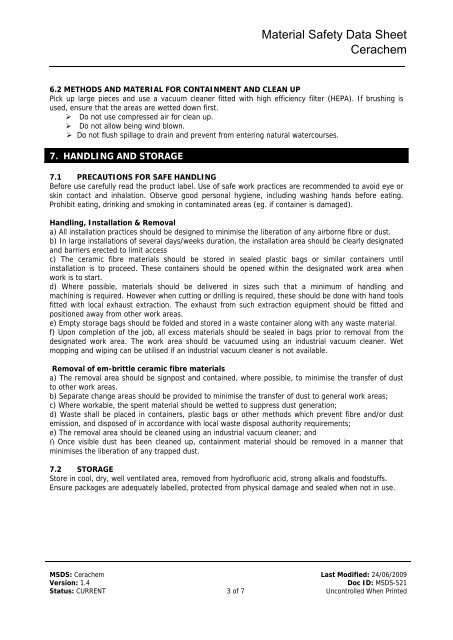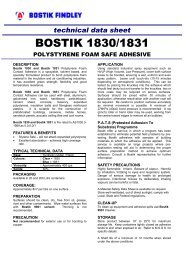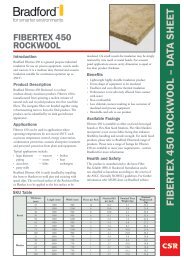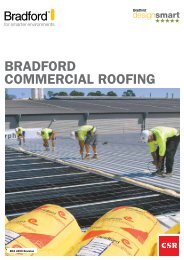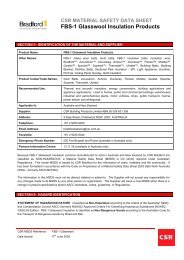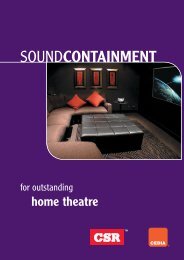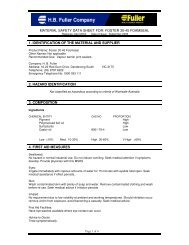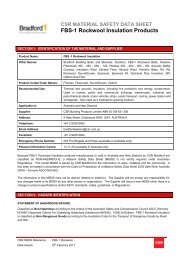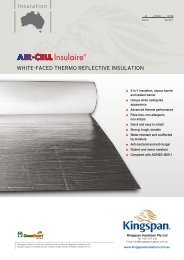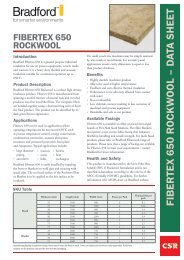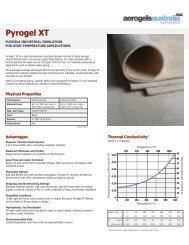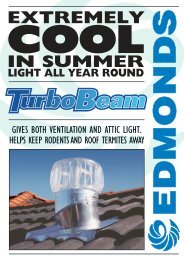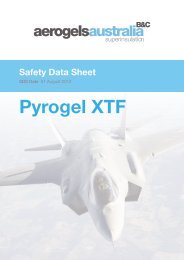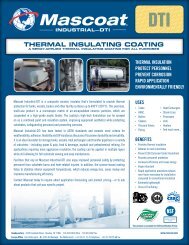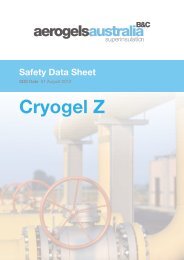9015_MSDS - Cerachem.pdf - Insulation Industries
9015_MSDS - Cerachem.pdf - Insulation Industries
9015_MSDS - Cerachem.pdf - Insulation Industries
You also want an ePaper? Increase the reach of your titles
YUMPU automatically turns print PDFs into web optimized ePapers that Google loves.
Material Safety Data Sheet<br />
<strong>Cerachem</strong><br />
6.2 METHODS AND MATERIAL FOR CONTAINMENT AND CLEAN UP<br />
Pick up large pieces and use a vacuum cleaner fitted with high efficiency filter (HEPA). If brushing is<br />
used, ensure that the areas are wetted down first.<br />
‣ Do not use compressed air for clean up.<br />
‣ Do not allow being wind blown.<br />
‣ Do not flush spillage to drain and prevent from entering natural watercourses.<br />
7. HANDLING AND STORAGE<br />
7.1 PRECAUTIONS FOR SAFE HANDLING<br />
Before use carefully read the product label. Use of safe work practices are recommended to avoid eye or<br />
skin contact and inhalation. Observe good personal hygiene, including washing hands before eating.<br />
Prohibit eating, drinking and smoking in contaminated areas (eg. if container is damaged).<br />
Handling, Installation & Removal<br />
a) All installation practices should be designed to minimise the liberation of any airborne fibre or dust.<br />
b) In large installations of several days/weeks duration, the installation area should be clearly designated<br />
and barriers erected to limit access<br />
c) The ceramic fibre materials should be stored in sealed plastic bags or similar containers until<br />
installation is to proceed. These containers should be opened within the designated work area when<br />
work is to start.<br />
d) Where possible, materials should be delivered in sizes such that a minimum of handling and<br />
machining is required. However when cutting or drilling is required, these should be done with hand tools<br />
fitted with local exhaust extraction. The exhaust from such extraction equipment should be fitted and<br />
positioned away from other work areas.<br />
e) Empty storage bags should be folded and stored in a waste container along with any waste material.<br />
f) Upon completion of the job, all excess materials should be sealed in bags prior to removal from the<br />
designated work area. The work area should be vacuumed using an industrial vacuum cleaner. Wet<br />
mopping and wiping can be utilised if an industrial vacuum cleaner is not available.<br />
Removal of em-brittle ceramic fibre materials<br />
a) The removal area should be signpost and contained, where possible, to minimise the transfer of dust<br />
to other work areas.<br />
b) Separate change areas should be provided to minimise the transfer of dust to general work areas;<br />
c) Where workable, the spent material should be wetted to suppress dust generation;<br />
d) Waste shall be placed in containers, plastic bags or other methods which prevent fibre and/or dust<br />
emission, and disposed of in accordance with local waste disposal authority requirements;<br />
e) The removal area should be cleaned using an industrial vacuum cleaner; and<br />
f) Once visible dust has been cleaned up, containment material should be removed in a manner that<br />
minimises the liberation of any trapped dust.<br />
7.2 STORAGE<br />
Store in cool, dry, well ventilated area, removed from hydrofluoric acid, strong alkalis and foodstuffs.<br />
Ensure packages are adequately labelled, protected from physical damage and sealed when not in use.<br />
<strong>MSDS</strong>: <strong>Cerachem</strong> Last Modified: 24/06/2009<br />
Version: 1.4<br />
Doc ID: <strong>MSDS</strong>-521<br />
Status: CURRENT 3 of 7 Uncontrolled When Printed


